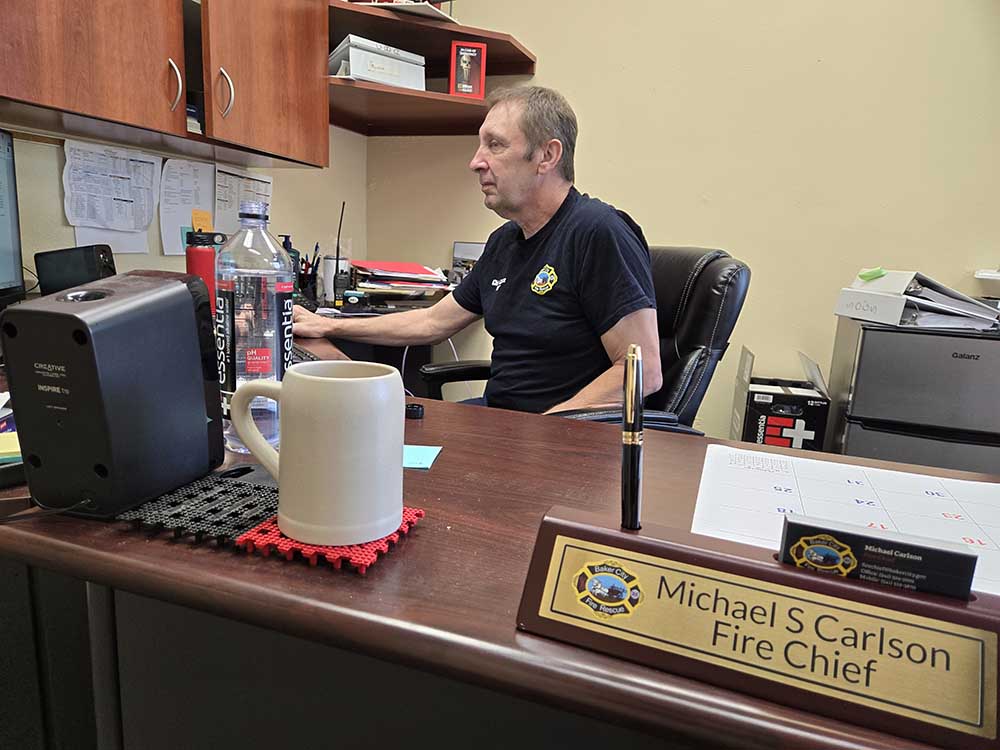Looking to improve concussion care
Published 9:57 am Wednesday, September 18, 2019
A bump, blow or jolt to the head can be dangerous. What may seem like a simple headache as a result of the impact could actually be a concussion, which can lead to even more problems. Grande Ronde Hospital now has a more thorough process for treating these injuries thanks to an idea from George Anderson, a physical therapist at GRH.
Anderson’s program started a year and a half ago after he noticed issues with how the hospital was treating concussions.
“I realized we didn’t have a clear protocol or path to treat people with head injuries,” Anderson said.
The process for creating this program began with a data dig by Anderson. He looked at hospital records to see how many concussions were treated and how they were handled during 2015-2016 and found that people were often being sent to other hospitals for care. Another issue Anderson saw is that the responsibility for following up with care was being placed on patients who might not be able to maintain lucid objective thoughts due to their concussion. To resolve this, Anderson devised a program that provides a more clear way of making sure people get the treatment they need.
The program he has created is collaborative both outside and inside the hospital. The protocol makes it possible for the treatment departments to effectively communicate. From the emergency department talking to physical therapy or speech therapy, to the primary care provider being informed of his or her patient’s status, the path to healing is clearer than before.
“The (care) provider now (has) a better understanding of the status of the person’s concussion,” Anderson said. “That is the flame we have started.”
According to Anderson, while the protocol benefits anyone who has suffered a concussion, student athletes of all ages are a primary focus of the program. With contact and impact sports, like football and soccer, concussions are more likely to occur. Knowing this, Anderson’s program reached out to the La Grande School District and has initiated discussions with other local school districts to help establish better protocol for treating student concussions. This includes following an established step-by-step progression from injury to returning to school, as outlined by the Oregon School Activities Association. Anderson’s program is meant to improve the communication between the school and care providers to ensure the student returns to school safely.
As part of this effort, the GRH Community Benefit Committee has funded the purchase of ImPACT testing for local high school athletes. The ImPACT test, administered by the OSAA, establishes a baseline for cognitive and physical function so that if a student who has taken the test does sustain a concussion those involved in the student’s care and health have data of the students’ level of ability to compare it to. By having the hospital pay the bill for this test, Anderson said, he saw the relationships with the schools improve.
“Now we have a system within the hospital to get these kids, or adults, into their primary provider with good information, and we are branching into the school system to create a better path for the school setting to further strengthen the communication between the PCP and the education system,” Anderson said.
The hospital funding this program was an opportunity to help fill a need that had been identified in the community, GRH Communications Director Mardi Ford said.
“It’s a great project to do. It’s a great thing for our community,” Ford said.
The symptoms of a concussion can present themselves in many ways, according to the Center for Disease Control. They can be physical responses such as sensitivity to light or noise, balance problems, dizziness, feeling tired or low on energy, headaches, nausea or vomiting at the onset, or problems with vision. There are also cognitive issues that can be indications of the injury, including attention or concentration problems, feeling slowed down, foggy or groggy, short- or long-term memory loss, and difficulty thinking clearly. Social and emotional responses to a concussion include increased anxiety, sadness, nervousness, irritability or feeling more emotional. Any drastic changes in sleep can also be indicators. These symptoms, when coupled with a recent impact to the head, show signs that the bump or blow sustained may be serious.
The length of time that these indicators are present can vary in each person, as well as the number and severity of the symptoms. Because of this, the needs for treatment differ — however, in all cases, treatment is necessary. Studies have shown that concussions can have long-term effects including reduced cognitive or physical ability or memory loss, and those that go completely untreated can sometimes lead to death. However, treatment for this type of brain injury is now more easily accessible to residents of Union County, due in part to Anderson’s program.
“Through this (program’s) targeted approach, you find out where the impairments are and treat them individually,” Anderson said. “The goal was to create the safest environment for someone to return to something he loves or she loves.”






